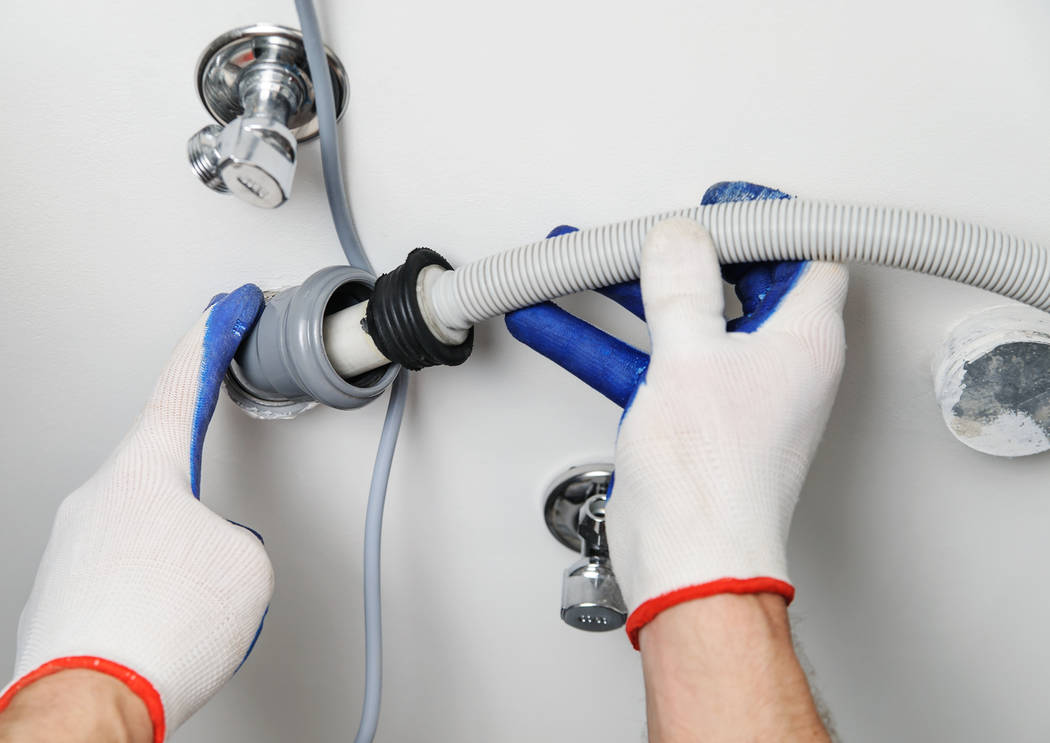Should you fix or replace washing machine that leaks?
Q: My washing machine is about 10 years old, and it has started leaking whenever I do a load of clothes. Should I fix it or buy a new one?
A: It depends on the problem. In many cases, it is a hose. But if it is one of the fittings or seals in the tub, you may want to leave that to a repair technician. The problem, however, is that his invoice can really sting.
You are probably better off buying a new machine if the problem with the old one is not a hose or a pump. Replacing fittings and seals requires a lot of labor, which translates into mucho dinero.
You can give the machine a quick inspection to determine the cause. Run the machine to see if there are any obvious leaks in the back.
Make sure that the machine is the problem and not the drain. It may be that the drain is clogged, and overflows when the washer discharges. Next, look behind the machine and check the water supply hoses. They run from the valves at the wall to the machine.
If you have a leak here, be thankful, as the fix is easy and cheap. The connections here tend to get corroded and the fix may be as easy as replacing the hose washers inside the connections (about $1). You can pry the old washers out with a screwdriver.
If the hoses look nasty, replace them with “no-burst” hoses. These are steel-braided, and they typically carry a 10-year warranty against leaks (about $12 each). They simply screw on and off.
There are several hoses inside the washer that need to be checked. Start with the drain hose. This one runs from the rear of the machine to the drain in the wall.
There is a clamp that holds the drain hose onto the outlet in the back of the machine. Sometimes the connection is on the outside of the machine and sometimes it’s inside. You can gain access to the inside of the washer by a panel at the rear or by removing a couple of screws and flipping the lid up. Once you have the cabinet open, the machine will tell the story.
Look for rust and buildup, particularly around the hose clamps. The clamps on your machine are typically spring-type and they tend to lose their spring. Check all of the hoses inside the machine as more than one may be leaky.
If that is the problem, you can get a new one at a parts dealer, but you will need the model number.
If the problem is a clamp, buy a hose clamp that tightens with a screwdriver (it’s called a worm-drive hose clamp). This type of clamp applies uniform pressure around the hose connection.
To remove the old clamp, squeeze the tabs together and shimmy it down the length of hose. Before you pull the hose off, have a bucket and some rags ready to catch the water left in the hose.
If everything seems OK so far, look at the pump. The pump will have two hoses attached to it, one of them leading to the drain (you may need to tilt the machine a bit). The pump is driven by a belt that spins an impeller designed to move the water. Remove the hoses, and then the belt.
You will need to relieve the tension on the belt by loosening the tension control bolt (this will be on a slot at the motor), after which you would loosen the motor-mounting bolt. This will allow the motor to turn and create slack in the belt.
Now you can unbolt the pump from the machine. Notice how the pump comes off the machine. There is a lever on the pump that slides into a slot (it’s pretty obvious). When you replace the pump, the lever goes back into the slot and the pump reattaches to the machine.
You might check the condition of the belt while you’re at it and replace it if it looks worn. Reconnect the hoses and re-tension the belt so that there is a ½ inch deflection as you push down on the longest span of the belt. Tension it by twisting the motor and tightening the bolts.
The long and short of it is to run the washer through a cycle and check it for leaks. If it’s not an obvious leak, then it’s decision time. The fittings and seals in the water tub basin likely need to be replaced. This requires a ton of disassembly and risk.
Given the age of your washer and the possibility of calling in a professional for this part, you might consider buying a new machine. It will cost a little more than paying someone to fix it, but you will get a new machine with a warranty.
Mike Klimek is a licensed contractor and owner of Las Vegas Handyman. Questions may be sent by email to handymanoflasvegas@msn.com. Or, mail to 4710 W. Dewey Drive, No. 100, Las Vegas, NV 89118. His web address is www.handymanoflasvegas.com.
Do-it-yourself
Project: Leaking washing machine
Cost: From $20-$200
Time: 1-4 hours
Difficulty: ★★★


















